B oomer an G B oomer an G
 PENELOPE DULLAGHAN
PENELOPE DULLAGHAN
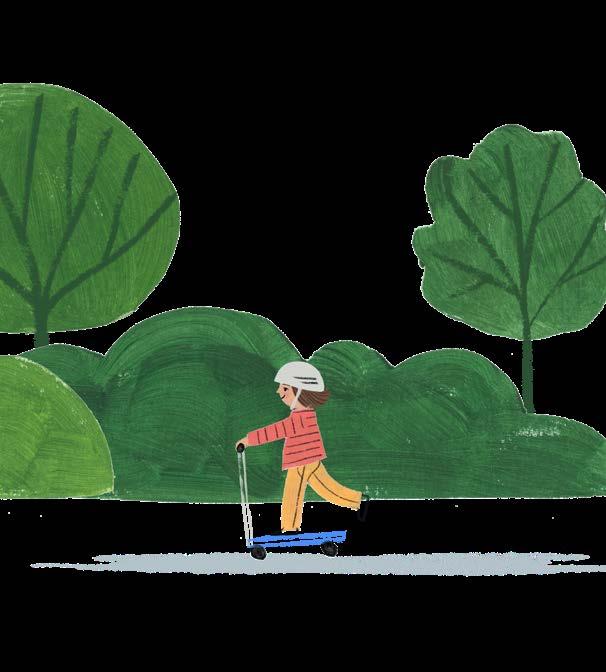
SUMMER EDITION GET
READY FOR THE MOST FUN, ACTIVE AND HEALTHIEST SUMMER EVER ILLUSTRATIONS BY:
IN THIS ISSUE
GET FIT
Make this the healthiest summer ever
THE SUMMER BUMMERS
Bees, ticks and poison ivy can put a damper on summer fun.
DESTINATION FUN
Area parks offer places to walk, run, hike, bike and much more.
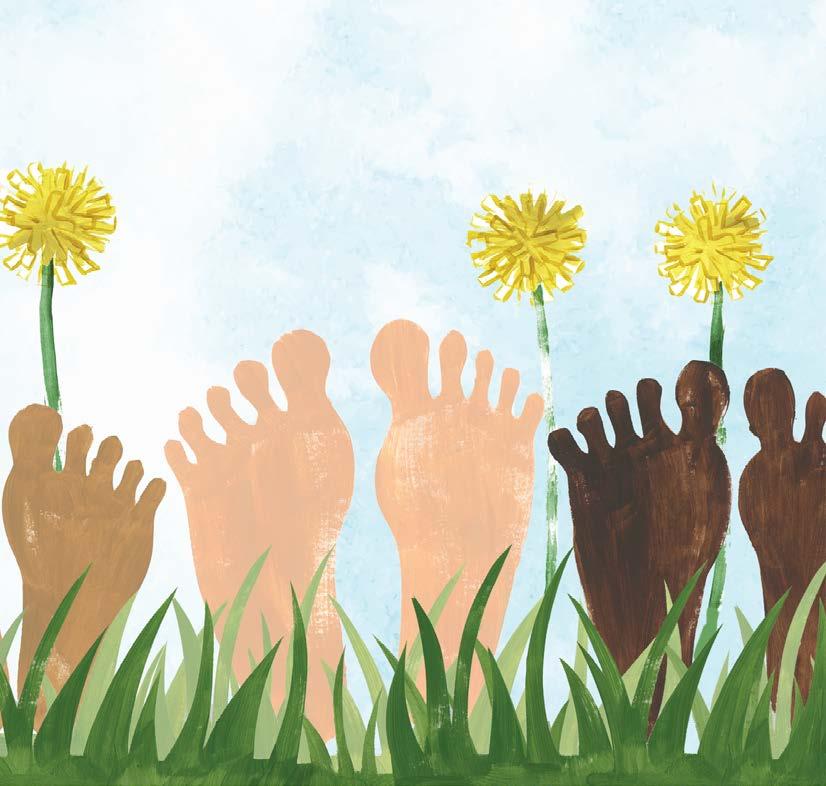
PLUS:
LOOK UP!

10 SUMMER CONSTELLATIONS YOU DON’T WANT TO MISS
WHAT IS THAT?
PLANT MYSTERY SEEDS FROM THE PARK
AVOID FIREWORK DANGER GETTING TOO CLOSE FOR COMFORT IS NOT ADVISED FOR KIDS.
YUMMY + HEALTHY
MAKE YOUR OWN FRUIT POPSICLES BOOKSHELF MAZE
04 06 10 14 16 17 18 20 21
03
Boomerang
Boomerang
Boomerang
MAKE THIS THE HEALTHIEST SUMMER EVER!
BY: MARY L. GAVIN, MD KIDSHEALTH FROM NEMOURS




IT’S HERE! SUMMER!
And after the last year (that was weird, right?), we are all ready to get out and enjoy life. What better time to make this the healthiest summer ever and have fun doing it?

While a lot of adults talk about “getting healthy and being fit,” it doesn’t need to be a chore filled with kale and carrots. If you’re a kid who wants to be fit, here are some easy ways to get started (knowing that some days — like your birthday — might call for cake and ice cream!).
1. EAT A VARIETY OF FOODS





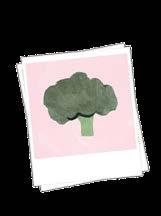

You may have a favorite food, but the best choice

How much do kids need? If you are 4 to 8 years old, drink 2 ½ cups of milk a day. If you’re 9 or older, aim for 3 cups of milk per day. You can mix it up by having milk and some other calciumrich dairy foods. Here’s one combination:
• 2 cups (about half a liter) of low-fat or nonfat milk
use it when your mom or dad says it’s time to stop watching videos or playing computer games!

6. FOLLOW THE 5-2-1!
How are you going to remember all this? Follow the “5-2-1” plan this summer! Eat five or more vegetables a day, watch two hour or less of TV and be active for at least 1 hour a day. DOWNLOAD OUR GUIDE and put it someplace to remind yourself to stick to your health goals!

Boomerang 05 Boomerang 05 04 Boomerang
SUMMER BUMMERS
BEES, TICKS AND POISON IVY CAN PUT A REAL DAMPER ON YOUR SUMMER FUN.
But the more you know, the less scary they are!
You’re so excited to go on a picnic with your family or maybe take a hike in the woods … but, wait, what is that buzzing? What is that red spot? Why am I all itchy? Noooooooo!
Every kid knows that bees, ticks and poison ivy should be avoided. Here’s all the info you need to keep you from being itchy, scratchy and miserable this summer!
WHAT’S A BEE?
“Bee” (or “honeybee”) is the word many people use to describe any flying insect that has wings and a stinger. But honeybees are really only one of a group of insects that includes other types of bees, wasps and ants.
types of bees worldwide, and they can be many different colors. The most familiar kind of bee is the honeybee. These bees build nests out of wax in old trees and manmade hives (like the ones that beekeepers take care of) and spend a lot of their time collecting nectar and pollen from flowers. Then they turn the nectar into honey for food.
Wasps are closely related to bees, but instead of only feeding on pollen and honey, wasps eat animal food, other insects or spiders. They are not fuzzy like bees, but seem kind of smooth and shiny, and they have skinnier bodies. There are also thousands of different types of wasps in the world. Two common types of wasps are bald-faced hornets and yellow jackets:
• Bald-faced hornets are black with white markings, and they build papery nests shaped like footballs in trees and shrubs.
• Yellow jackets have yellow and black stripes on their bodies and are smaller than hornets and honeybees. They make their nests in the ground or in old tree stumps.
Ants are small insects that can be brown, black or red. Some have wings; others don’t. Some ants can sting, like the fire ant. Fire ants are tiny, reddishbrown and live in nests under the ground.
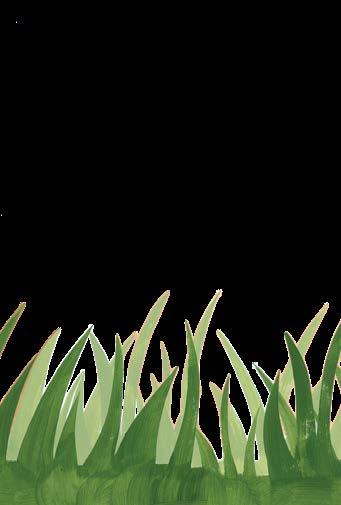
WHAT A STING LOOKS AND FEELS LIKE
Honeybees, wasps, hornets, fire ants and yellow jackets may look different and have different homes, but they all sting when they are upset! If a person is stung by any of these insects, the sting will feel a lot like a shot at the doctor’s office.
The site of the sting will feel hot, and it may itch. A red bump surrounded by white skin will develop around the sting, except for the sting of the fire ant, which turns into an itchy blister.
WHAT YOU SHOULD DO
If you think you have been stung by one of these insects, tell an adult immediately. Some people are allergic to stings from insects. The symptoms of an allergic reaction include hives (red patches on the skin that sting and itch), nausea, dizziness, a tight feeling in the throat or difficulty breathing. A person who has these symptoms needs medical attention right away.
But most sting victims can simply follow these steps after getting stung:
• Have an adult help you remove the stinger if one is left behind after a honeybee sting. (It doesn’t really matter how it’s removed. What is important is that it’s removed as quickly as possible.)
• Wash the area with soap and water.
• Apply some ice to the area.
• Ask your mom or dad for a pain reliever.
WHAT A DOCTOR WILL DO
Call the doctor if you or your parent are worried about the redness, swelling or itching. Sometimes, the doctor will suggest giving a medicine called an antihistamine to control symptoms. If someone has an allergic reaction to a bee sting, a doctor must immediately give a shot that fights the reaction. People who know that they are allergic to bee stings also sometimes carry emergency medicine that they can give to themselves to prevent a severe reaction from happening.
HOW TO AVOID GETTING STUNG
If you know you are allergic to bees or other insects, you’ll want to take extra steps to avoid getting bitten or stung. You may want to avoid places where such insects spend time, like gardens or orchards in bloom.
No one likes to get stung, so here’s some advice for everyone:
• Wear shoes outdoors.
Bees are fuzzy insects that feed on flowers. There are thousands of different
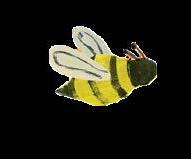
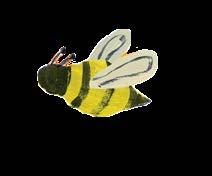
Wasps and many bees can sting more than once because they are able to pull out their stinger without injuring themselves. Only honeybees have special hooks on their stinger that keep the stinger in the skin after a person is stung. The stinger gets torn out of the bee’s body as it tries to fly away. As a result, the honeybee dies after stinging.
• Don’t disturb hives or insect nests.
• Don’t wear sweet-smelling perfume, lotions or hair products.
• Avoid bright-colored or flower-printed clothing.
Boomerang 07
THE 06 Boomerang
• Cover food when eating outdoors.
• Be careful when outside with open soda cans because yellow jackets and ants like to climb inside for a sip.
• Watch out for garbage cans because they attract bees and yellow jackets.
• If a bee or wasp flies around you, stay calm and don’t swat at it. If you get stung, tell an adult and go indoors right away.
WHAT’S A TICK?



Ticks are part of the arachnid family, which also includes mites, spiders and scorpions. A tick attaches itself to
WHAT A BITE LOOKS AND FEELS LIKE
A person who gets bitten by a tick usually won’t feel anything at all. There might be a little redness around the area of the bite.
If you think you’ve been bitten by a tick, tell an adult immediately. Some ticks carry diseases (such as Lyme disease or Rocky Mountain spotted fever) and can pass them to people. These diseases can be very serious and need immediate treatment.
WHAT YOU SHOULD DO
Your parent or another responsible adult should check you for ticks, especially on your head (including your scalp), back, neck, armpits and groin area, after you’ve been playing or hiking in the woods. If you ever find a tick on you, ask for an adult’s help in removing it. Using tweezers, an adult should grab the tick as close as possible to your skin, and pull the tick off in one motion. Don’t cover the tick with petroleum jelly, fingernail polish or any other substance, since these don’t help the tick come out and can make things more complicated.
If part of the tick stays in your skin, don’t worry; it will eventually come out. But you should tell a parent if you notice any irritation in the area. Once the tick is removed, your parent may want to put the tick in a small container or zip-locked bag to show
WHAT A DOCTOR WILL DO
Doctors don’t need to treat most tick bites. But if the tick was carrying Lyme disease or Rocky Mountain spotted fever and passed it on, any symptoms that might mean you are sick will be treated with antibiotics. Your doctor might ask to see the tick to help make a diagnosis. If these diseases are treated early on, it’s rare for there to be any lasting changes to a person’s health.
HOW TO AVOID GETTING BITTEN
Ticks like spending time in shrubbery, where they can remain close to the
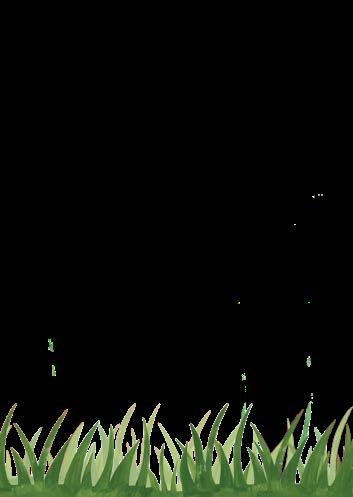
WHAT IS POISON IVY?
“Leaves of three, let them be!“ You’ve probably heard that little rhyme about poison ivy, the plant that can cause an itchy rash. But do you know why? It’s because of urushiol (say: yoo-ROO-shee-ol), a colorless, odorless oil (or resin) found in the leaves of the plants.
WHAT ARE THE SIGNS & SYMPTOMS OF POISON IVY?

Urushiol is considered an allergen because it causes an allergic reaction: the rash and sometimes swelling. Not everyone will get a reaction, but most people will.
WHEN SHOULD I SEE THE DOCTOR?
It’s a good idea to see your doctor if you have any kind of rash, especially if you have a fever, too. If your rash was caused by poison ivy or a similar plant, the doctor may recommend cool showers and calamine lotion.
In more severe cases, a liquid or pill medicine called an antihistamine might be needed to decrease itching and redness. A steroid (say: STERoyd), another kind of medicine, may be prescribed in some cases. This medicine may be applied directly to the rash or taken in a pill or liquid
IS POISON IVY CONTAGIOUS?
contagious. But it’s possible to get a poison ivy rash without ever stepping into the woods or directly touching one of the plants. Here’s how: Urushiol can pass from one person to another. Plus, a person can pick it up from anything that’s come in contact with the oil, including your dog that likes to roam the woods! Urushiol even can travel through the air if someone burns some of the plants to clear
HOW CAN I PREVENT RASHES FROM POISON IVY?
To avoid getting a poison ivy rash:
• Learn to identify poison ivy, oak and sumac, so you can steer clear of them. The leaves of poison plants release urushiol when they’re “injured,” meaning if they get bumped, torn or brushed up against. Once the urushiol has been released, it can easily get on a person’s skin. When the oil is released, the leaves may appear shiny or you may see black spots of resin on them.
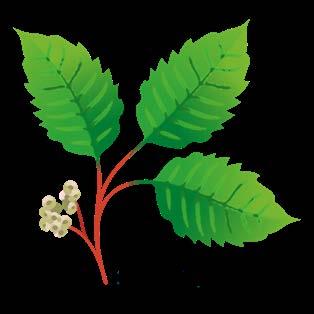
• Avoid areas where you know these plants live.
• Wear long sleeves and long pants when you’re in areas that could contain poisonous plants.
• If you come into contact with urushiol oil, try to wash it off your skin right away. But don’t take a bath! If you do, the oil can get in the bath water and spread to other areas of your body. Ouch! Take a shower instead and be sure to use soap. And if your dog has been out exploring the woods, give
08 Boomerang
HANCOCK COUNTY
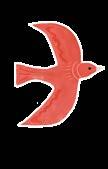
visit these parks in for a summer of fun
SCHOOL IS OUT AND SO IS THE SUMMER SUNSHINE. SO, WHAT’S A KID TO DO?
HEAD TO A PARK!
Whether you go with friends or family, exploring the parks around your home and beyond can be a fun way to enjoy new places and make great memories. In fact, we think it’s so much fun that we’ve created a scavenger hunt for some of the best parks in Hancock County. Print out your copy by clicking below.
DOWNLOAD


Visit these amazing parks, check off the sunshines, and then bring your completed list (with your name and parent’s contact information!) to any Hancock Wellness Center location (in Greenfield, McCordsville or New Palestine) to receive a FREE pedometer and be entered to win a grand prize!

Parks of Hancock County start
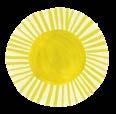








SCAVENGER HUNT
MARY MOORE PARK
RILEY PARK
THORNWOOD NATURE PRESERVE
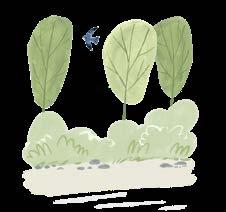
BECKENHOLDT PARK
COMMONS PARK
HENRY B. WILSON PARK
LION’S PARK
GET HEALTHY
Spending time outdoors is important for your health and the health of our planet. Kids should be getting a minimum of 60 minutes of exercise EACH day, but summer is a great time to aim for more than that. Always make sure to have your water bottle, healthy snacks and sunscreen handy so that you can enjoy your time outdoors!
end
JACOB SCHRAMM NATURE PRESERVE
Boomerang 11 10 Boomerang
Parks of Hancock County CHECK ALL YOU HAVE VISITED
RILEY PARK
APPLE STREET & I-40, GREENFIELD
Riley is one of the most popular parks in Greenfield. With a swimming pool, creek, picnic area and plenty of open space to play, you can be sure to get your daily dose of fun here!
BECKENHOLDT PARK
2770 N. FRANKLIN ST., GREENFIELD
Bring a picnic basket full of your faves or even some hotdogs to roast on one of the charcoal grills in this fun community park.
BRANDYWINE PARK
900 E. DAVIS RD., GREENFIELD
Looking to get closer to the natural world? Check out the trails, creek and playgrounds at Brandywine!
COMMONS PARK
856 W. 5TH ST., GREENFIELD
This Greenfield park has awesome playgrounds to test your skills on the monkey bars or even create an obstacle course with your friends!
HENRY B. WILSON PARK
2349 COLLINS WAY, GREENFIELD
This 14-acre park offers trails, fishing, picnic tables and a floating bridge!
MARY
MOORE PARK
951 FRANKLIN ST., GREENFIELD
There are 8 acres to explore of mulched trails with information markers to learn about local flora and fauna.
THORNWOOD PRESERVE
1597 S. MORRISTOWN PIKE, GREENFIELD
These beautiful 40 acres offer 7 nature trails, a campground, 2 creeks, a picnic area and a suspension bridge you MUST experience!
LION’S PARK
301 N. BUCK CREEK RD., CUMBERLAND
Located in Cumberland, Lion’s Park has both play equipment and sports fields, so you can bring your friends and start a pickup game.
JACOB SCHRAMM
NATURE PRESERVE
1926 S. 600 W., NEW PALESTINE
Ready to go for an easy hike? Head on over to this 31-acre nature preserve in New Palestine for some great exercise and so much more!
HANCOCK COUNTY
VETERANS PARK
116 S. STATE ST., GREENFIELD
Why not learn a bit about the sacrifices Hancock County soldiers made for our freedom? This educational tribute features a walking tour covering about 1/3 of an acre.
LANDMARK PARK
223 E STAAT ST., FORTVILLE

Near downtown, this little park features a pretty gazebo, picnic areas, a football-soccer field and offers live music and festivals all summer long.
MACY PARK 980 GONDOLA RUN, GREENFIELD
Explore the Little Brandywine with walking trails and shelters on 16.9 acres.
SUGAR CREEK TOWNSHIP PARK
4136 S. 700 W., NEW PALESTINE
To date, 35 acres of this 88-acre park have been developed with shelters, fitness trails, playgrounds, a Frisbee golf course, gazebo, free dog park, education trails and a veterans memorial.
FORTVILLE
MEMORIAL PARK
400 W. CHURCH ST., FORTVILLE
Rolling hillsides and running water comprise this park of playgrounds, ball diamonds, tennis courts, picnic shelters and trails.
SOUTHEASTWAY PARK
5624 S. CARROLL RD., NEW PALESTINE
Check out this 188-acre green space that offers 2.5 miles of paved walking trail, several forest trails, numerous prairies, a pond, shelters, a playground and activity center!
MCCORDSVILLE SPORT PARK
5450 IN-67, MCCORDSVILLE
This park offers 15 acres of sportsrelated fields for training, playing, camps and pickup games.
Boomerang 13 12 Boomerang
REACH for the STARS
THE SKY WAS ONCE FULL OF STORIES. ANCIENT CULTURES SPENT NIGHTS
TELLING EPICS OF HEROES AND MONSTERS AND MEMORIZING PATTERNS IN THE STARS. The stars are a little less familiar these days as light pollution and obstacles such as sturdy roofs often get in the way of our view. However, if you venture away from the city lights, you can still find a handful of star constellations to enjoy. Let’s explore 10 constellations you can find for an epic summer.
SUMMER CONSTELLATIONS OVERVIEW
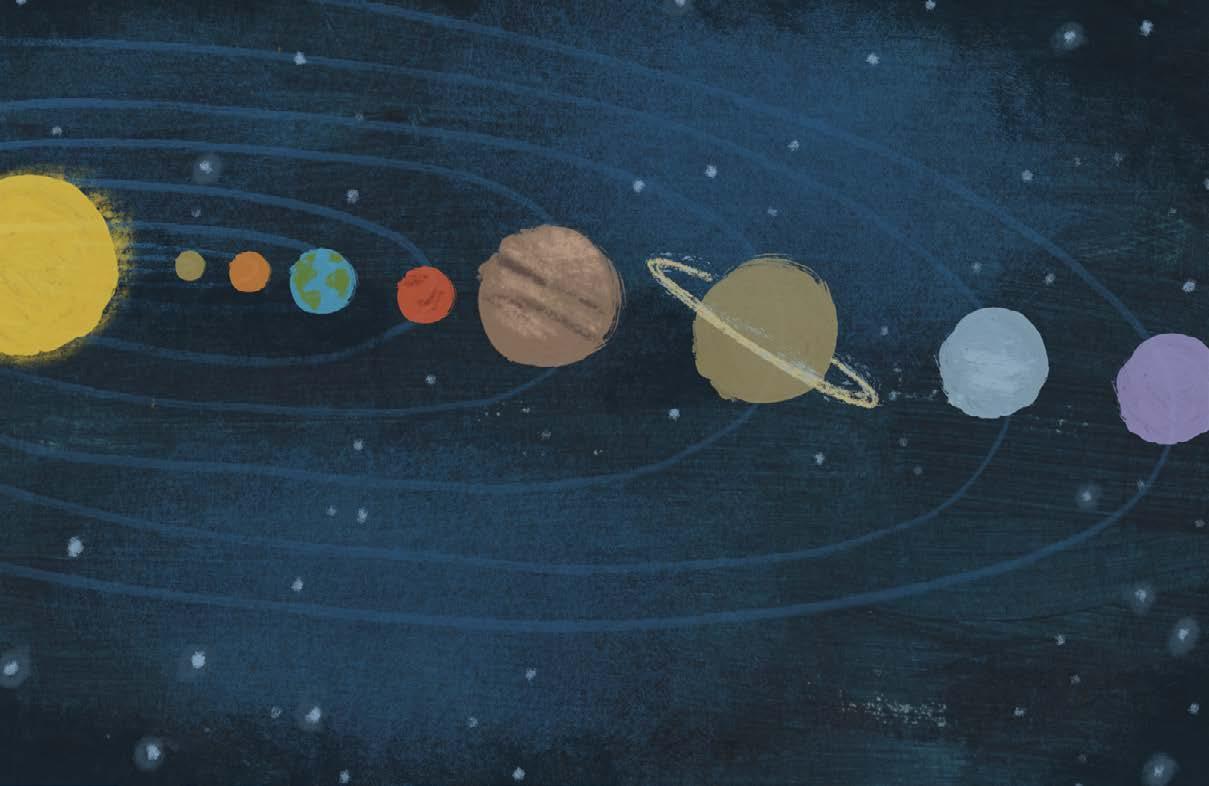
• Ursa Major (Big Dipper)
• Polaris (North Star)
• Ursa Minor (Little Dipper)
• Cassiopeia
• Leo
• The Summer Triangle
o Aquila
o Cygnus
o Lyra
• Scorpius
• Sagittarius
URSA MAJOR
One of the most recognizable groups of stars in the Northern Hemisphere (that’s where we live!) is the Big Dipper. These stars form the center of the constellation Ursa Major, which is Latin for “greater bear.” As the sun sets, look to the northern sky for a collection of seven bright stars. Once you’ve spotted it, the Big Dipper can be used as a guide to find other summer constellations.
POLARIS, THE NORTH STAR
If you draw a line between the two stars at the Big Dipper’s edge and follow it through the night sky, you’ll
find Polaris, the North Star. Polaris is very close to the celestial pole, meaning it tends to stay fixed in the north, while all other stars circle around it.
URSA MINOR
Now that you’ve found Polaris, you can spot Ursa Minor, also known as the Little Dipper. The North Star is positioned at the very tail end of Ursa Minor. While the stars in this constellation are 10 to 100 times fainter than the North Star, you can still make out a littler dipper.
CASSIOPEIA
Let’s go back to the Big Dipper. Draw a line between the two stars at the constellation’s edge and follow it through the sky about the same distance as you did to find Polaris. Keep going and you’ll spot the distinctive “W” shape of Cassiopeia. According to Greek mythology, Cassiopeia was a vain queen who angered Poseidon, the sea god. As a consequence, Cassiopeia was chained to her throne in the heavens.
LEO
Leo is a constellation of stars that ancient cultures viewed in the shape of a lion. In early summer, right around sunset, begin at the two stars closest to the Big Dipper’s handle and follow their line toward the western sky. A backward question mark forms the mane of Leo, a constellation reportedly discovered more than 6,000 years ago.
THE SUMMER TRIANGLE
If you look to the east, you’ll see a trio of bright star constellations known as Aquila, Cygnus and Lyra. Together, these constellations make up the iconic Summer Triangle.
If you have trouble finding it, you can follow two stars from the Big Dipper across the sky to a star called Deneb, one of the most distant visible stars. Deneb forms the tail of Cygnus, a great swan constellation that gets its name from an Arabic phrase meaning “the tail of the hen.”
Many other stars have names with Arabic roots. For instance, Vega, a star in the constellation Lyra, gets its name from the Arabic phrase “the falling eagle.” Altair, in the constellation Aquila, means “the flying one.”
SCORPIUS AND SAGITTARIUS
Floating above the southern horizon, you’ll find two more constellations known as Scorpius and Sagittarius. Between these two constellations is the exact center of our galaxy, the massive black hole around which all the stars of the Milky Way rotate.
A bright reddish star, Antares, marks the heart of a giant scorpionshaped constellation named “Scorpius.”
Sagittarius, located just east of Scorpius, is sometimes depicted as a centaur (a half-human, halfhorse creature in Greek mythology) wielding a bow. However, other people say it looks more like a teapot with the Milky Way rising from its spout like steam.
IT’S WRITTEN IN THE STARS
The night sky offers much to explore. Make the summer a bit more magical this year by searching the glorious heavens for these 10 star-studded constellations.
-10 SUMMER CONSTELLATIONS TO FIND-
Boomerang 15 14 Boomerang
NATURE answer the call of
PLANT MYSTERY SEEDS FROM THE PARK
Looking for the perfect outdoor adventure this summer? Go on a seed hunt at your local park! This activity is educational and fun, teaching you about the nature cycle as you explore the great outdoors. Plant your seeds to watch your collection grow, literally! !
Before you start, you’ll need
• a bag for collecting seeds on your hunt
• small containers to store seeds (glass jars, boxes, etc.)
• tape and a marker to label your seeds
• large magnifying glass and child-size tweezers (optional)
Prepare for your seed hunt
Now that you’ve gathered your materials, prepare for your seed-collecting adventure by discussing what a seed is and how it can grow into a new plant if the conditions are right. Chat about all the different types of seeds you might find on your journey. What purposes do they serve?
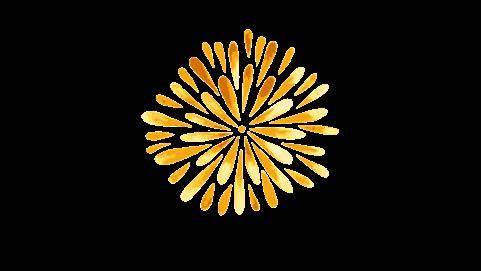
Set out on your journey
It’s time to take a trip to your local park and begin seed hunting! You may be surprised by how many seeds you’ll find in just a few minutes. Enjoy the great outdoors and collect seeds to your heart’s content.
Sort your seeds

Upon arriving home, sort your seeds. Spread your collection onto a clean table and separate them into small containers of your choosing. Using your tape and marker, label the plants you know and put question marks on the ones you don’t know; these are your mystery seeds.
Further your understanding
Looking to learn more about seeds? Plant the seeds you have gathered! Throughout this process, talk more in-depth about what conditions seeds need to grow into healthy plants. To make this activity even more exciting, plant your mystery seeds, help them grow, and watch the mystery unfold!

The adventure continues
Seed hunts are a great way to learn about the cycle of nature. Grow your seed collection over time by going on even more seed-hunting adventures. Have an abundance of seeds? Create fun art projects with them. It’s the activity that keeps on giving!
ENJOY THE FIREWORKS BUT AVOID THE DANGER!
BY KIDSHEALTH MEDICAL
ISN’T THE FOURTH OF JULY GREAT?
In addition to being a celebration of America’s independence as a nation, there’s no school, lots of families have barbecues or cookouts, and you can go see a fireworks display at night.
The safest way to enjoy fireworks is at a professional display. Some people light sparklers at home or even set off their own fireworks, but this can be dangerous. Some of the people hurt each year aren’t the ones setting off the fireworks but people who are nearby them.
It’s best to stay away from areas where nonprofessionals are setting off fireworks. Fireworks can cause serious eye injuries, including blindness, if the eye tissue gets damaged or torn. Other common injuries from fireworks include burns to the hands and face, which can leave scars. Someone could even lose one or more fingers if fireworks go off the wrong way. Fireworks can also start fires, which can hurt even more people.
If you know someone who plans to set off fireworks at home, here are some safety tips to share:
• Only adults should light fireworks.
• Never use fireworks indoors.
• Be prepared to put out a fire by having a hose or water nearby.
• Light fireworks one at a time.
• Stay away from a firework that has not gone off and never try to relight it.
• Sparklers may seem less dangerous than fireworks, but they get extremely hot — as hot as 1,800°F (982°C). Sparklers can light clothes on fire and can cause kids to get badly burned. That would take the fun out of a great holiday!
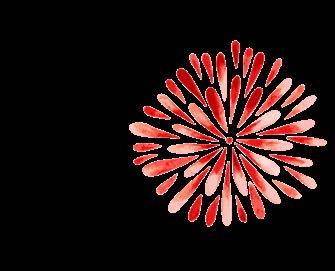
EXPERTS
Boomerang 17 16 Boomerang
WHILE FIREWORKS ARE THRILLING, GETTING TOO CLOSE IS NOT ADVISED FOR KIDS.
There’s nothing better than enjoying a homemade fruit popsicle on a warm summer’s day.
These treats are a fun way for both kids and adults to work together while experimenting in the kitchen. Not only is this recipe delicious, it’s healthy, too! Homemade fruit popsicles add more nutrients to your day without using refined sugar. All you will need are a few simple ingredients and perhaps some fun music to fuel your treat-making time.

LET’S GET STARTED!
To make fruit popsicles you’ll need
EQUIPMENT
• a blender
• popsicle mold tray(s)*
• cupcake liners (optional)
*Don’t have popsicle mold trays? No problem! Use 3-ounce plastic cups to serve as molds for your fruit popsicles. For this method, you will also need:
• aluminum foil
• popsicle sticks
Ingredients
• 2 cups frozen fruit (your choice), thawed
• ¼ cup apple juice
• 2 tablespoons honey
• ½ lemon, juiced
• 1 pinch salt
The ingredient amounts listed are perfect for 10-count 3-ounce popsicle mold trays. Feel free to adjust these measurements based on what you use as your popsicle mold!
There are so many different fruits to choose from when creating your very own delicious popsicles. You can try bananas, blueberries, kiwi, strawberries, watermelon and more. For even more fun, try a combination of two or even three fruits!
Directions
1 First, gather your equipment and prepare your ingredients. Once you’ve gathered your materials, it’s time to create your masterpiece!
2. Second, combine popsicle ingredients in a blender and blend until smooth.
Don’t be afraid to experiment with your ingredients until you find the perfect blended mixture. This is where your creativity will come into good use!
3. Third, pour blended mixture into popsicle molds.
If you are using 3-ounce plastic cups as your molds, pour the blended mixture into each cup until there is no more mixture left. Next, cover each cup with aluminum foil. Then, insert one popsicle stick through the center of each cup’s foil.
4. Next, place popsicle molds in the freezer for at least 5 hours or overnight.
Leaving your popsicle molds in the freezer overnight will give you something to look forward to the next day!
5. Finally, it’s time to enjoy!
To prevent melted popsicle drips from making a mess, cut a small slit through the bottom of a cupcake liner and insert the popsicle stick through it. The cupcake liner will catch any dripping juice, saving you from unwanted messes.
AN “a-peeling” treat
With a little bit of creativity, you can turn wholesome fruit mixtures into delicious homemade frozen popsicles. Now you have the perfect recipe in your back pocket for those warm summer days. Be sure to experiment with this recipe each time you recreate it. The possibilities are endless! Boomerang
19 18 Boomerang
PERSONAL HEALTH SERIES
SAFE AND HEALTHY SUMMER BOOMERANG BOOKSHELF
HAVE FUN FOR ONE
Instructions: Use this chart so you can keep track of every day you get at least 1 hour of physical activity this summer. Keep the chart where you can use it as a reminder to keep moving, like on the fridge or in your bedroom. Ask a family member or friend to join you. When you reach that daily goal, fill in a circle. If you have seven filled-in circles at the end of each week, reward yourself with a special healthy treat, a family outing, a new book, anything that’s healthy and makes you feel good!

I was active for at least 1 hour these days:
week one
week two
week three
week four
week five
week six
week seven
week eight
CIRCLE SOME OF THE ACTIVE THINGS YOU’LL DO THIS SUMMER, AND ADD SOME OF YOUR OWN:
POLLY DIAMOND AND THE MAGIC BOOK: BOOK 1 BY ALICE KUIPERS (AUTHOR), DIANA TOLEDANO (ILLUSTRATOR)
ARLO & PIPS: KING OF THE BIRDS BY ELISE GRAVEL (AUTHOR/ILLUSTRATOR)
POWER FORWARD: ZAYD SALEEM, CHASING THE DREAM BY HENA KHAN (AUTHOR), SALLY WERN COMPORT (ILLUSTRATOR)
WEST MEADOWS DETECTIVES: THE CASE OF MAKER MISCHIEF BY LIAM O’DONNELL (AUTHOR), AURÉLIE GRAND (ILLUSTRATOR)
A GIRL, A RACCOON, AND THE MIDNIGHT MOON BY KAREN ROMANO YOUNG (AUTHOR), JESSIXA BAGLEY (ILLUSTRATOR)
THE WORLD ACCORDING TO HUMPHREY (SERIES) BY BETTY G. BIRNEY (AUTHOR)
THE UNICORN RESCUE SOCIETY: THE CREATURE OF THE PINES (SERIES) BY ADAM GIDWITZ (AUTHOR), HATEM ALY (ILLUSTRATOR)
20 Boomerang
Boomerang 21 end start
SWIM PLAY TAG RIDE A BIKE RUN WALK SKIP JOG SHOOT HOOPS ROLLERSKATE SKATEBOARD GO FOR A WALK WALK THE DOG HULA HOOP CAPTURE THE FLAG KICKBALL STREET HOCKEY SOCCER FRISBEE VOLLEYBALL TENNIS EXERCISE VIDEO GAMES FOOTBALL FLASHLIGHT TAG HIDE-AND-SEEK BASEBALL OR SOFTBALL GARDENING HOPSCOTCH JUMPING ROPE
Become the healthiest generation ever!
When you know more about your health and how to take care of it, you can be more, do more and have more fun — starting now!
Hancock Health 801 N. State Street Greenfield, IN 46140 HancockRegional.org
 PENELOPE DULLAGHAN
PENELOPE DULLAGHAN


































